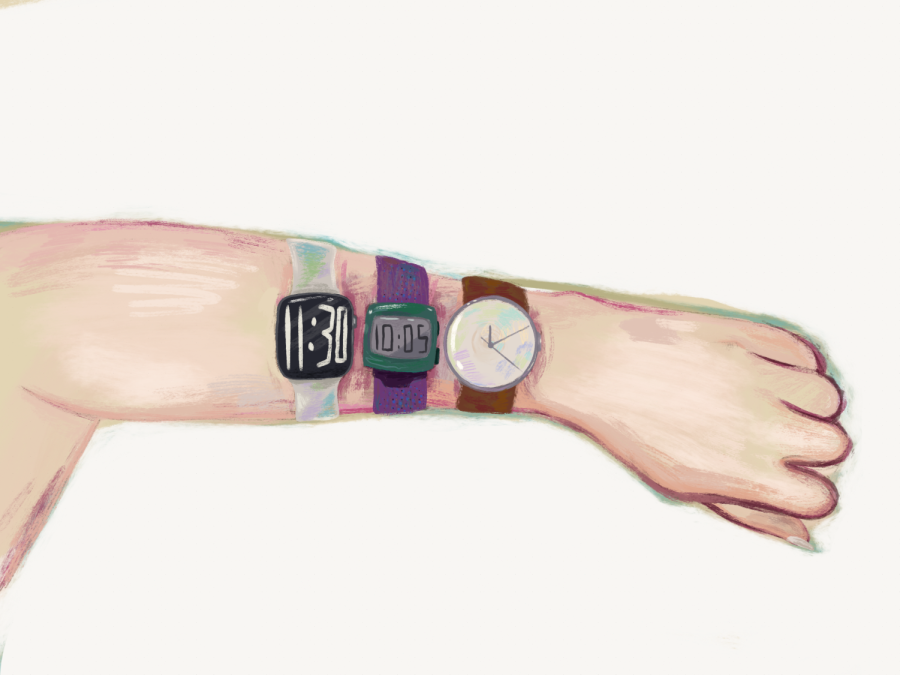
It’s ominous, dreadful, horrible – it’s the infamous SAT. Many Foothill juniors took the SAT for the first time on March 12 at either Buena or Ventura high school. Drowsy students were forced to wake up, wolf down a good breakfast, and report to their classroom at 8 a.m. on a Saturday morning.
In high school, it always seems that multiple-choice tests determine our futures but it doesn’t seem that a choice between A, B, C, D (and sometimes E) can give colleges an accurate description of who we are as a person.
Students, parents, and teachers alike have debated whether or not the SAT (Scholastic Aptitude Test) is a valid assessment of students’ abilities and capacity to learn in college and have successful careers. But whether it is or isn’t, high school juniors and seniors must take it if they wish to apply to a four-year university.
The Test
The SAT is a 3-4 hour test consisting of one 25-minute essay and 10 multiple choice sections. Eight of these sections are 25 minutes, one is 20 minutes, and one is 10 minutes. The multiple choice sections alternate between math, critical reading, and writing sections.
In reality, though, the whole exam is a reading comprehension test. Taking the SAT is difficult because the questions are phrased strangely, so it’s hard to determine what the question is asking you to do.
I’m currently a junior, and I took the SAT on March 12. I had been studying for it since last summer by using one of the immense Princeton Review study books and I felt that I was ready for it.
Piece of cake, right? Not really. My mind became cloudier as the morning wore on. My brain worked like a robot trying to decipher each twisted question, and process of elimination became my best friend. The SAT has a way of knocking you on your butt no matter how much you study or how smart you are. It’s just hard.
And that’s not even taking into account that sitting for 3 hours in Buena’s desks makes you restless. Think that’s bad? Most counselors encourage students to take the SAT twice. Joy.
The Material
The College Board hires geniuses to transform the SAT material into something harder than it is, it’s like they enjoy seeing students squirm! The actual questions are not that hard once you know what they are asking for. You spend most of the time just thinking during the test, not bubbling the answers. For example, the math sections only includes material from Algebra 2 and below.
Formulating the questions in this fashion, colleges have a better idea of who is “smart” – and who isn’t. Colleges now can look at a single number out of 2400 and make a hasty judgment of you based on a single number. Think about it: one number can change your life. Isn’t that scary?
The Bell Curve is another problem. It’s the hardest curve to beat. Only 12% of the students taking the test will receive a score above 2200, and 12% will get a score below 400. The rest of us are left to muddle in-between. Your score on the SAT depends on who is taking the test with you that day. You may answer most of the questions right and still only score 1700.
What about the students with test anxiety? I am not a bad test taker, but even I was feeling nervous taking this test. If colleges primarily look at SAT scores, the bad test takers don’t have a chance to show all they can do. It may be the difference between being admitted and being rejected.
Should the College Board be allowed to take advantage of and trick hard-working students? Is it fair? The College Board seems to think so. In this day and age, it’s not enough to just get by, we are forced to strive for excellence in school by mastering the multiple-choice exam. It’s no longer ok to get B’s in school or get a 1600 on the SAT, we must load ourselves with AP classes, sports, extracurricular activities, and community service to stand out in the crowd.
Whatever happened to the joy of learning?
The competition is heating up; and it’s cutthroat in the real world. Parents wonder why their teens are bad-tempered, sleep deprived, or even cheaters. The decisions we make now will affect us for the rest of our lives, and they tell us to relax and babysit our little siblings.
Under Pressure
Pressure on teenagers continues to crescendo; escalating from freshman to junior year and from generation to generation. My parents easily gained acceptance to four-year-universities without an overflow of blood, sweat, and tears. Now, doing well or doing not-so-well on the SAT can be the difference between gaining admission to the college of your dreams or getting that indispensable scholarship.
Thanks to recent budget cuts, scholarships are in short supply in California. Even out of state isn’t a stable option – out of state fees make it harder and harder for students to afford college, even if they take out dozens of student loans. Debt is a major issue.
AP (Advanced Placement) and Honors Placement programs have gained enrollment due to frantic parents who see these classes as a sure-fire way to get into college and do better on the college entrance exams (SAT and ACT). Students must prepare for college by impressing the admissions office. If a student doesn’t do very well, they must make it up with AP classes and extra-curricular activities to have a chance at securing a spot at the university.
Everyone is feeling the crunch junior year.
A Thrifty Choice
Colleges want thinkers and doers, but can a single score qualify these abilities? No. For all you nervous people and bad test-takers out there, there is an alternative option for you: the Liberal Arts college. These colleges are smaller in size, and value personal information (what type of a student you are, extra curriculars, etc.) and grades more that your SAT score (but they still require it, mind you). And for those whose wallets are beginning to pinch, these colleges are your salvation: Liberal Arts colleges give out more scholarships than state colleges now due to private funding and state budget cuts. Maybe there is a silver lining after all.








